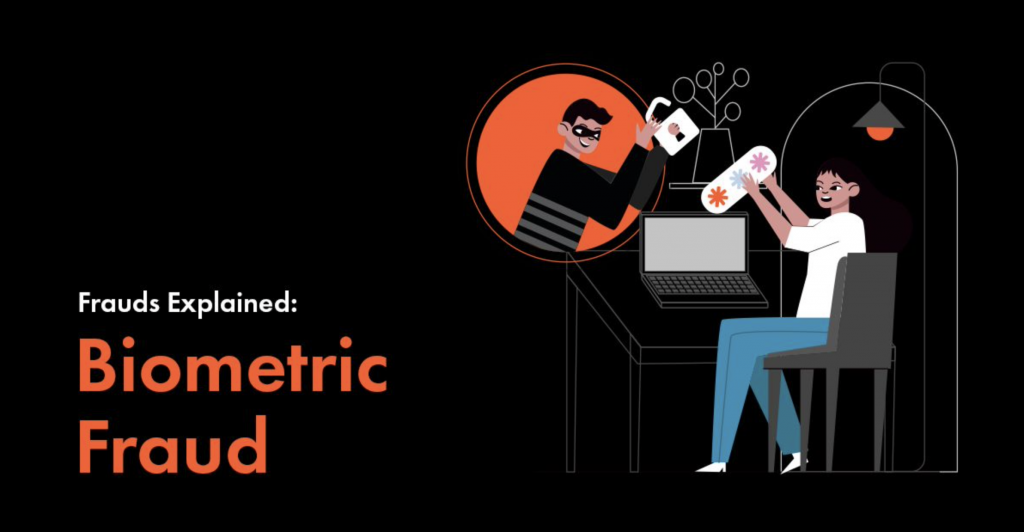Identity frauds that might pose a threat to your company in 2021 – Ondato
Ondato is a partner of FinTech North. In this article, the team from Ondato highlight some key areas of consideration for the FinTech North community in relation to fraud.
Identity frauds that might pose a threat to your company in 2021
The days when secure client verification was only a headache for business giants are long gone. With more companies moving their services into the digital realm (and their employees to full-time work-from-home mode), fraudsters are figuring out new ways to take advantage of the world of conference calls and remote onboarding.
What identity frauds should businesses be aware of in 2021? How do you make sure you’re fully compliant and protected? There are a lot of new scammers out there, and they work hard to improve their schemes to deceive identification systems and steal your funds or data (or both).
No matter what business you’re in, with cyber fraud on the rise, it’s time to give extra security some serious thought. Let’s take a look at some of the most notable frauds that might affect your remote operations in 2021.

Half-Fake, Half-Human: Synthetic Identity Fraud
Synthetic identity fraud, one of the most prevalent types of fraud in 2020 (registration required), has every chance to be the number one cyber threat in 2021. Here’s how it works: Fraudsters combine existing and false information to create a completely new identity that looks so real, you can’t even tell it’s not.
What’s next? Synthetic identity fraudsters can use the new identity for a range of purposes, like opening a new bank account and making fraudulent purchases. The worst part is that once the theft has occurred, it’s almost impossible to identify and quickly catch the attackers.
Some researchers, however, believe that in 2021 synthetic identity fraud will decrease for businesses and shift to targeting individual customers instead. According to a recent study published by TransUnion, in 2020, many financial institutions improved their security levels well enough to tackle synthetic fraud. On the flip side, scammers have never been particularly slow in generating new creative ways to compromise your security.
Deepfakes And AI-Generated Faces
We saw the rise of deepfakes as a method of stealing identities in 2020, and let’s be frank — this form of fraud will only evolve in 2021. AI-powered synthetic compilations of audio or video materials that imitate a real person’s behaviour were used early on to mock politicians and celebrities, using these “recordings” for blackmail and fake news purposes.
Its trickery capacities were quickly picked up by scammers who started to use it for identity theft — creating fake accounts, hacking devices and, ultimately, stealing data. And although the losses associated with this type of fraud were not dramatic in 2020, some analytics predict new forms of deepfake deception will emerge in the coming years.
A slightly more worrying threat, AI-generated faces are another fraud method that involves creating new identities by merging the faces of different people into one synthetic face. These manipulations are often enough to trick the facial recognition technology businesses use for safe client onboarding. Thus, you will need more advanced tools to identify and counter these attacks.
Key Targets In Economics And Finance
A recent study published by Juniper Research indicates that businesses might lose over $200 billion to online fraud in 2020-2024 if they don’t bolster their security measures. And it’s no surprise that the financial sector will be the key target for cyber attackers and their identity-theft schemes.
According to the Q1 2021 Fraud and Abuse Report, the majority of cyber frauds are now associated with the European region, which was recently named a “fraud hub” of 2020 after becoming the top target for fraud attacks. The fraudsters’ attack rate in Europe was a staggering 39% as of the end of 2020, and it doesn’t show any signs of stopping in 2021.
Countering Threats: Trends In Identity Protection
As the number of large-scale scams disturbing financial operations keeps growing, financial organisations will need to rethink many of their verification processes to tackle potential threats.
Integrated solutions and a document-centric approach seem to be the latest notable trends in business security. If you’re part of a financial institution that doesn’t yet use document-centric identity verification to identify scammers’ login attempts, this is a solution to rely on. The study referenced above predicts that by 2022, 80% of all organisations will switch to a fully document-centric identity verification process as opposed to a data-centric one for remote onboarding.
An entire verification recording of a new client’s onboarding can be key to achieving better security. This method uses automated photo verification to gather information about each customer, making sure their identities are accurate, and then saves a complete recording of the process, which minimises the risk of attacks.
What are other easy steps your company can take to avoid scams? Talk to your employees about the importance of security. You would be surprised how many data breaches occur for a simple reason, such as opening a phishing email. This is especially true in the time of the pandemic: Your employees should know how to securely access and use the company’s systems remotely.
To keep fraudsters deterred, businesses need to adapt quickly and rely on the newest sophisticated biometric authentication methods. Scammers will find another target once they realise their attempt to attack you costs too much to try.
Let’s stay safe and keep our data secure!
Ondato would like to talk to the compliance, risk and fraud teams at startups, SME and corporates in the northern FinTech community.



